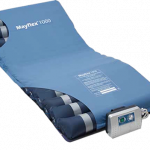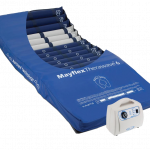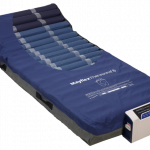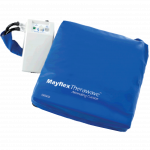PRODUCTS BY SECTOR
Symptoms of Pressure Ulcers
Symptoms of pressure ulcers
Parts of the body that are most at risk of developing pressure ulcers are those not covered by a high amount of body fat and which are in direct contact with a supporting surface, such as wheelchairs and, or beds.
For an example, if you are bedbound you are at risk of developing pressure ulcers on your:
- shoulders or shoulder blades
- back of your head and the rims of your ears
- elbows
- knees, ankles, heels or toes
- spine and the tail bone (the small bone at the bottom of your spine)
If you are a wheelchair user, you are at risk of developing pressure ulcers on:
- your buttocks and the back of your hip bone
- the back of your arms and legs
Grading of Pressure Ulcers
Healthcare professionals use several grading systems to describe the severity of pressure ulcers. The higher the grade, the more severe the injury to the skin and underlying tissue.The most common is the European Pressure Ulcer (EUPAP) Grading System.
Grade One
Grade one pressure ulcers are the most superficial type. The affected area of skin appears discoloured and is red in white people, and purple or blue in people with darker coloured skin.
In grade one pressure ulcers, the skin remains intact but it may hurt, or itch and it may feel either warm, spongy, or hard.
Grade Two
A grade two pressure ulcer has damage to some of the outer surface of the skin (the epidermis) or the deeper layer of skin (the dermis) leading to skin loss. The ulcer looks like an open wound or blister.
Grade Three
In grade three pressure ulcers, skin loss occurs throughout the entire thickness of the skin and damage is caused to underlying tissue, the ulcer apprears as a deep cavilty like wound. However, the underlying muscle and bone are not damaged.
Grade Four
Grade four pressure ulcers are the most severe type of ulcer. The skin is severely damaged and the surrounding tissue begins to die (tissue necrosis). The underlying muscles or bone may also be damaged.
People with grade four pressure ulcers are more susceptible to developing a life-threatening infection.











